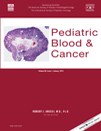Lower TGFß serum levels and higher frequency of IFNγ-producing T cells during early immune reconstitution in surviving children after allogeneic stem cell transplantation†
Conflict of interest: Nothing to declare.
Abstract
Background
Allogeneic hematopoietic stem cell transplantation (SCT) is increasingly used as a salvage therapy for patients with high-risk malignancies as well as life-threatening non-malignant diseases. However, only limited data about the association between outcome and functional parameters of recovering lymphocytes are available so far.
Procedures
In this prospective study of 19 pediatric SCT recipients, we serially evaluated immune parameters quantitatively and qualitatively before and throughout allogeneic SCT. These data were analyzed with respect to survival.
Results
Age, gender, GvHD, and type of graft were not different between surviving and non-surviving patients. Notably, in our cohort there was no case of transplant-related or infectious mortality. However, with the exception of two patients with advanced MDS, all patients not in complete remission (CR) relapsed in addition to three patients in higher CR (n = 7). All seven patients relapsing after allogeneic SCT later succumbed to their disease recurrence. Uni- and multivariate analysis showed that relapsing patients had higher TGFß serum levels as well as lower percentages of IFNγ-producing T cells before and early after transplantation. Furthermore, relapsing patients had a further decline in their thymic function between day 60 and 120 whereas non-relapsing patients already showed increasing TREC values during this time interval.
Conclusions
Collectively, patients who later relapse show a different pattern of immune reconstitution before and at early time points post-transplantation. Pediatr Blood Cancer 2013; 60: 121–128. © 2012 Wiley Periodicals, Inc.




